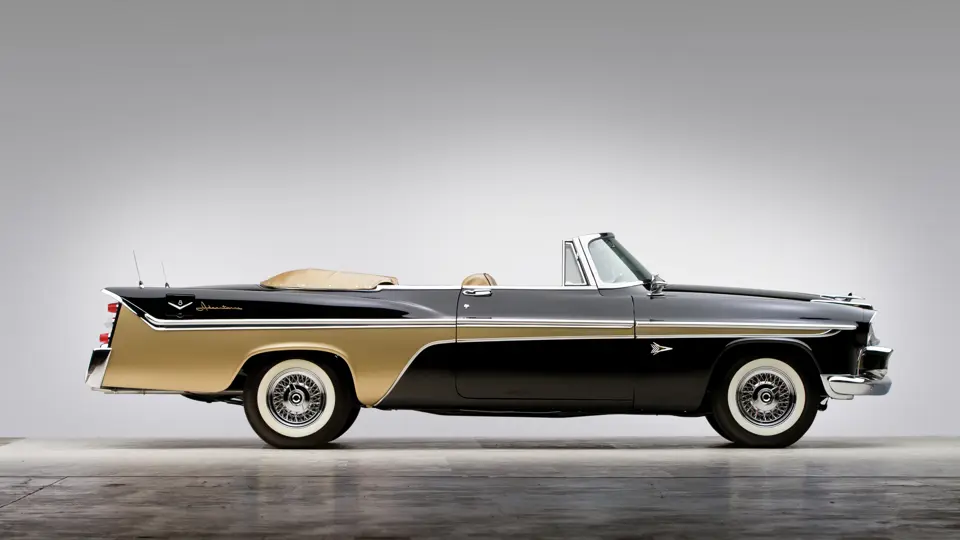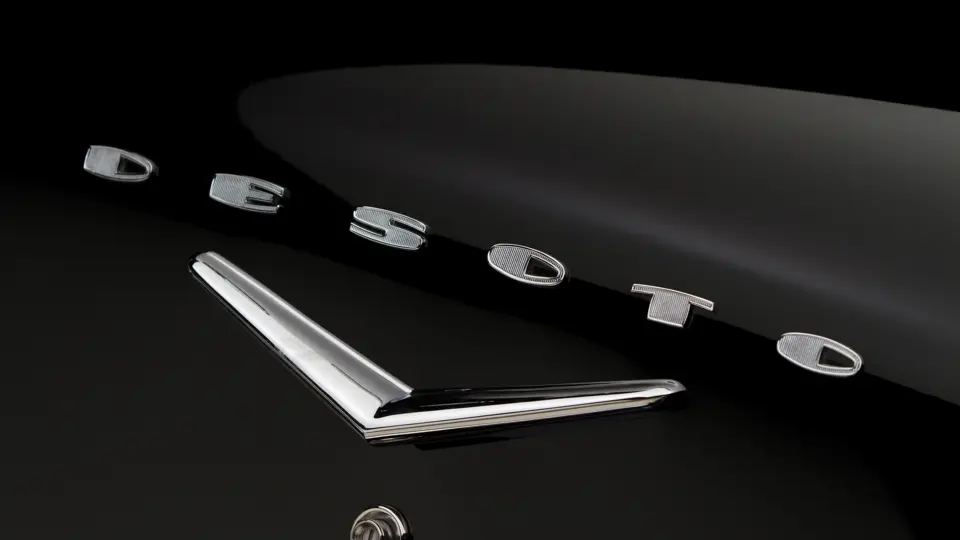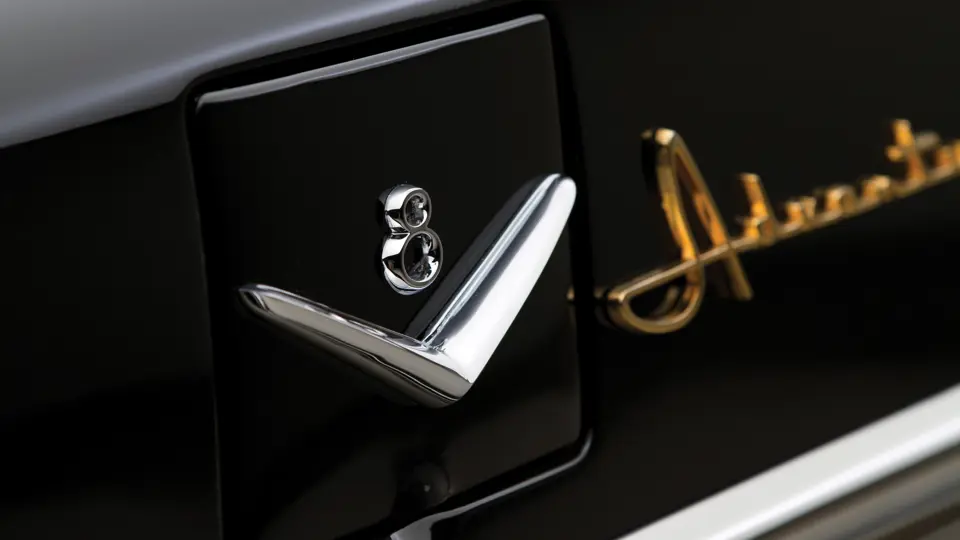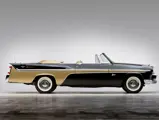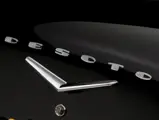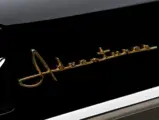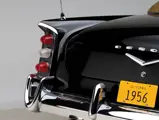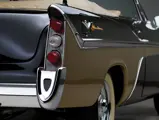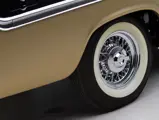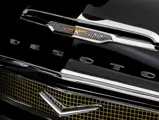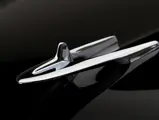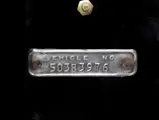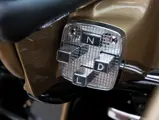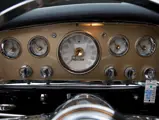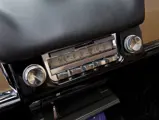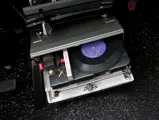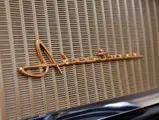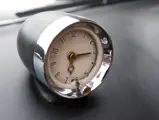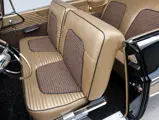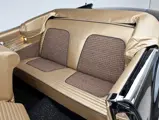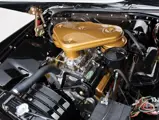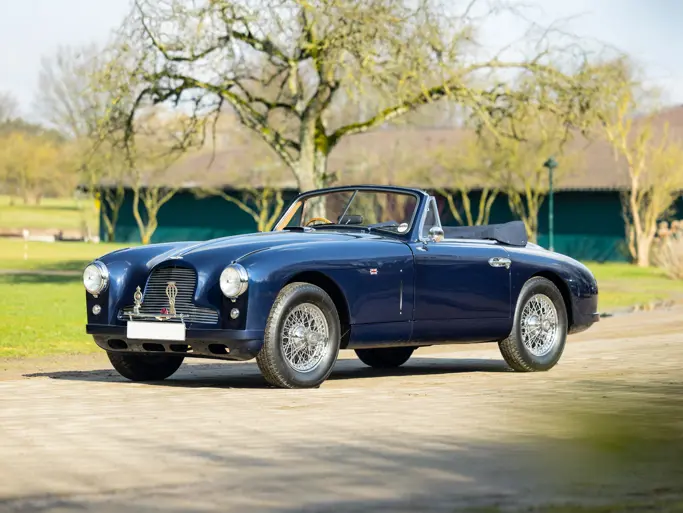The car DeSoto should have built
Model S-24. 320 bhp, 341.4 cu. in. Hemi OHV V-8 engine, two-speed Powerflite automatic transmission, coil spring independent front suspension, live rear axle with semi-elliptic leaf springs, and four-wheel hydraulic drum brakes. Wheelbase: 126.0 in.
DeSoto, originally intended as Walter Chrysler’s mid-priced, six-cylinder car, was re-positioned in the corporate lineup after Chrysler purchased Dodge. From 1933, DeSoto was an upscale “idea car,” countering GM’s Oldsmobile. Advanced features pioneered by DeSoto included an attractive, Miller-inspired grille from 1932–1933, hidden headlights in 1942, and a long-wheelbase, highly-trimmed Suburban prestige utility sedan built from 1946 to 1952.
As Chrysler Corporation explored various concept cars with designer Virgil Exner and Italian coachbuilder Ghia, DeSoto shared in the result. Its 1953 Adventurer joined the Chrysler C-200 and d’Elegance, as well as the Plymouth XX-500 and Dodge Firearrow, in predicting the future. Designed in Detroit by Exner and built in Italy by Ghia, the Adventurer was a close-coupled coupe that owed much to the earlier Chrysler concepts, but it had its own distinctive personality. Just one was built, and it made the show circuit during 1954. An Adventurer II followed in 1954, a larger and sleeker car, just 55-1/2 inches high. It sat only two, using the remaining cabin space for fitted luggage. Again, only one was built.
It was natural, then, that when a production specialty model was contemplated for 1956, it was given the surname “Adventurer.” Some referred to it as the “Golden Adventurer.” Like its namesakes, it was a coupe, but since it was based on a production model, it was a two-door hardtop. The cars were available in combinations of gold, black, and white, with the sweep panel in a contrasting color. Gold-colored hardware and accessories were used liberally throughout the vehicle. Standard equipment included power brakes, a power seat, power windows, windshield washers, dual exhausts, and heavy-duty suspension.
The engine was treated to a warm-up. The 341-cubic inch Hemi received a high-lift cam, larger valves, stiffer valve springs, modified slipper pistons, heavy-duty connecting rods, and a shot-peened crankshaft. With 9.25 to 1 compression and dual Carter WCFB four-barrels, it made 320 brake horsepower, 25 percent more than the standard Fireflite four-barrel 330. Treated as a subseries of Fireflite, 996 Adventurers were built.
Many have questioned why there was no convertible Adventurer. This may have resulted from DeSoto’s selection as the pace car for the 1956 Indy 500. The actual pace car was a specially-built Fireflite convertible, with a tuned engine and beefed-up suspension. DeSoto President Irv Woolson lapped the Brickyard at 100 mph when launching the race. Naturally, a pace car replica was created for dealers to sell. Called the Pacesetter, it had the heavy-duty suspension, power seat, and power windows, but it used the regular Fireflite 255 horsepower Hemi.
The modest nature of the Adventurer modifications no doubt assured that someone, sometime, would build an Adventurer convertible. This car demonstrates in real life that someone did. It began life as a Fireflite convertible. Taking its cue from the Adventurer hardtop coupe, it has the 341-cubic inch, 320 brake horsepower Hemi, fed by twin four-barrel carburetors with a batwing air cleaner. The car has a Powerflite automatic transmission and unique interior design, colors, and fabrics, plus the Adventurer scripts and medallions.
The conversion was done as part of a complete restoration. The result is incredibly impressive. The gold sweep panel looks perfect on the jet black body. It is matched by a gold vinyl interior with black piping and gold lamé seat inlays. The black carpets sparkle with gold glitter. The convertible top is tan canvas with a gold vinyl boot cover. All contours are correct, the paint exhibits a deep shine, and the brightwork shows only slight scuffing of some stainless items.
The engine compartment and undercarriage are just as nice. The Hemi V-8 has gold valve covers on a silver engine block. The chassis is painted gloss black, almost the same quality of the body finish. Whitewall tires are mounted on Kelsey-Hayes chrome wire wheels.
Accessories include all Adventurer equipment, power steering, brakes and windows, and windshield washers. The AM radio is teamed with Chrysler’s pioneering Hi-Way Hi-Fi, a 16-2/3 rpm record player mounted under the dashboard. An authentic 1956 accessory, it used special records purchased from the dealer. It is very rare to see one today.
It can be argued whether Chrysler should have built a 1956 Adventurer convertible. But someone did, and today, you have the opportunity to be the envy of all collectors by aquiring this outstanding one-off example.




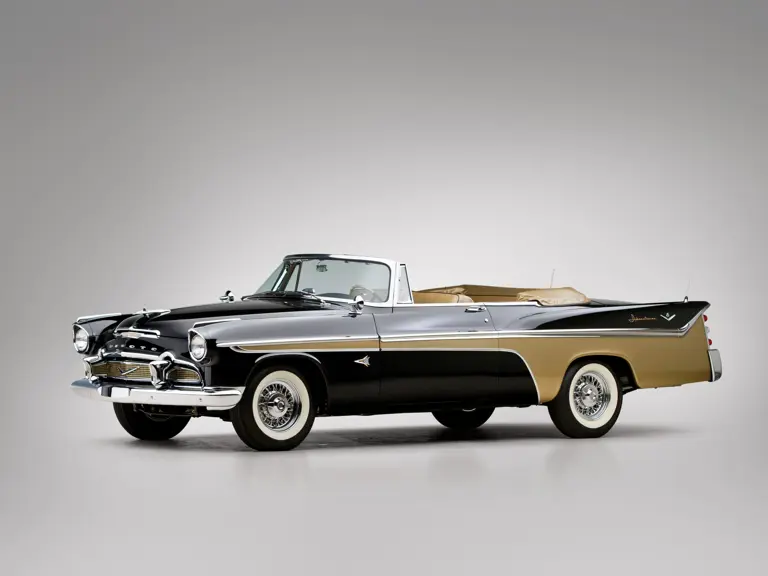
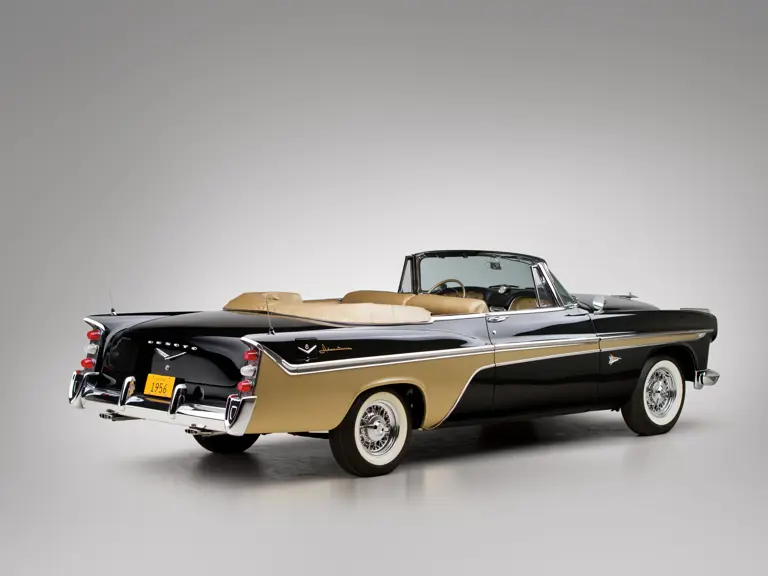
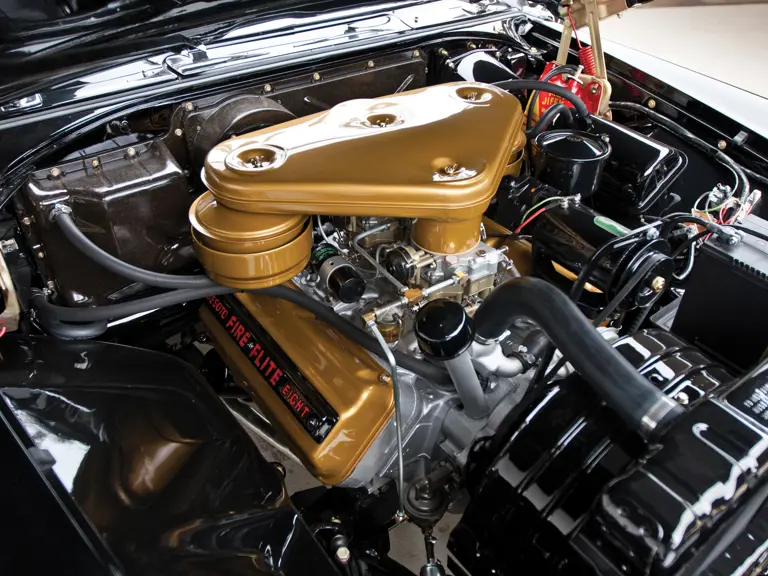
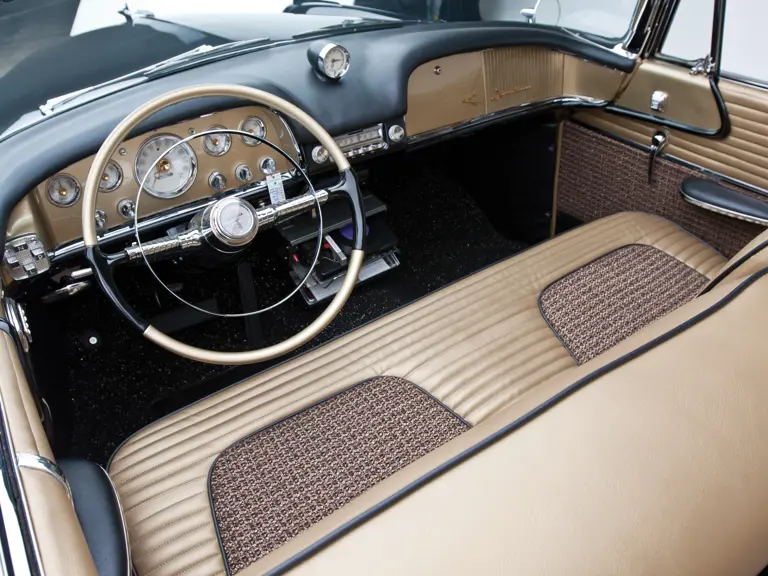
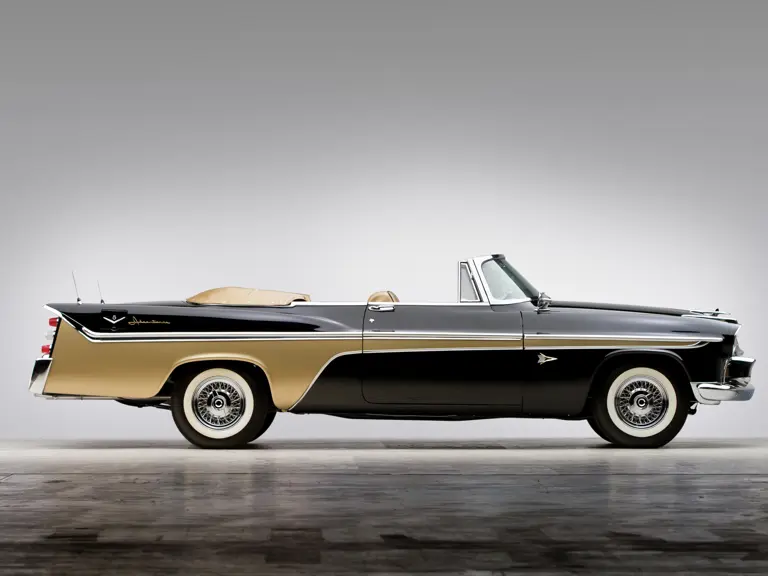
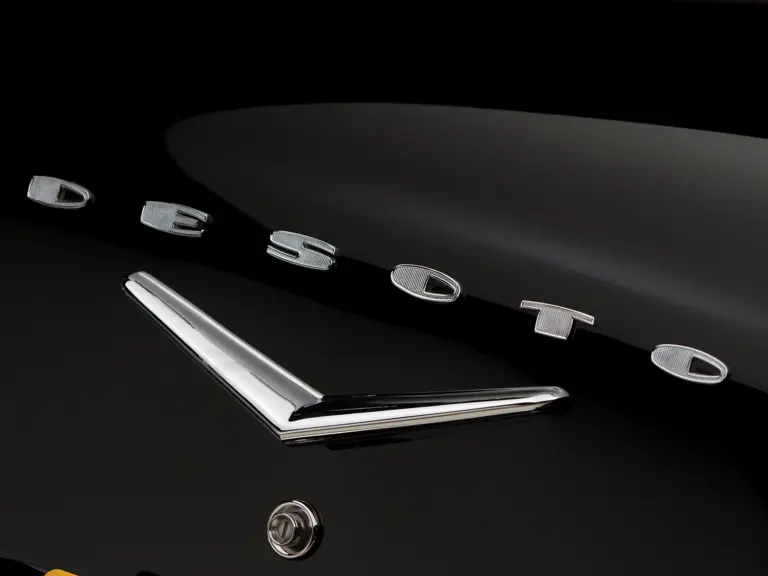

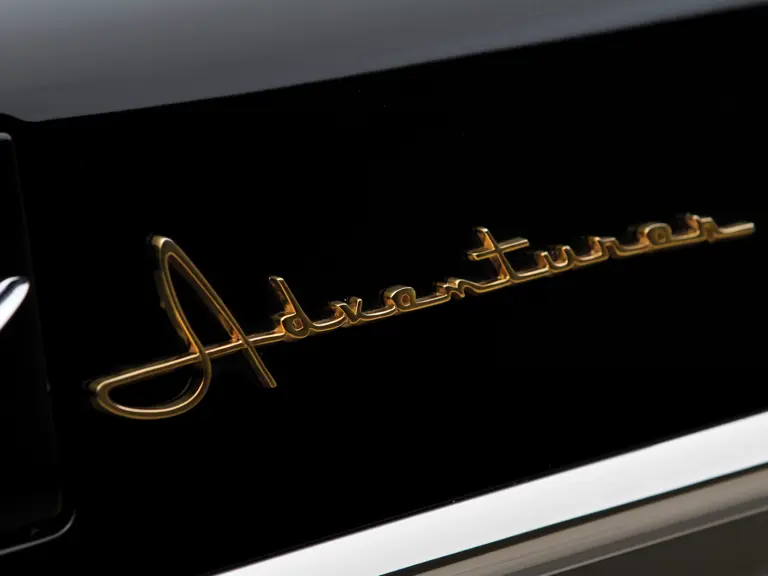
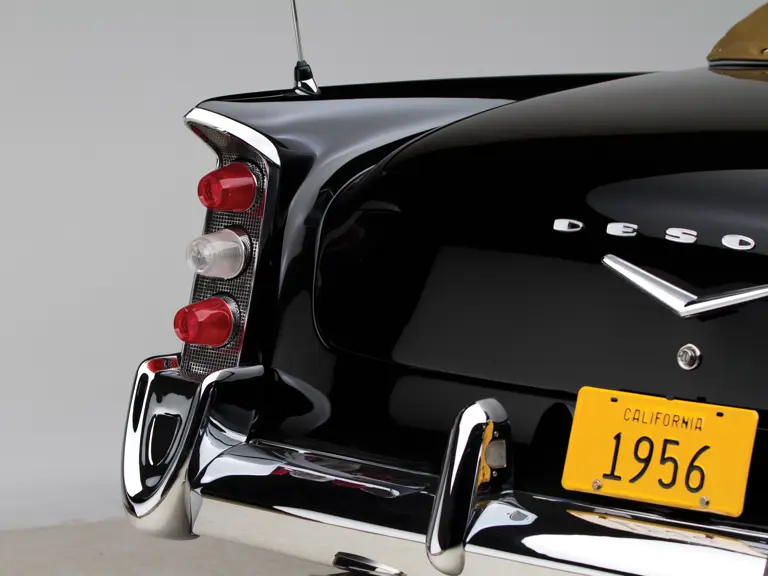
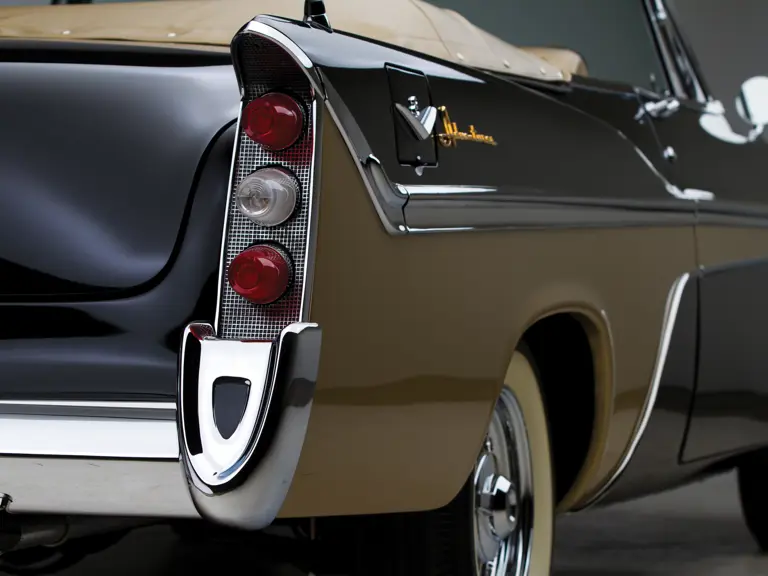
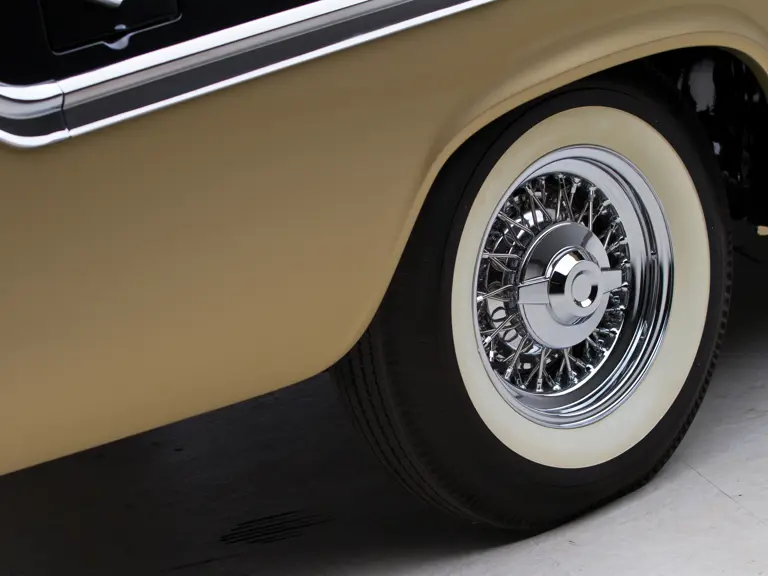
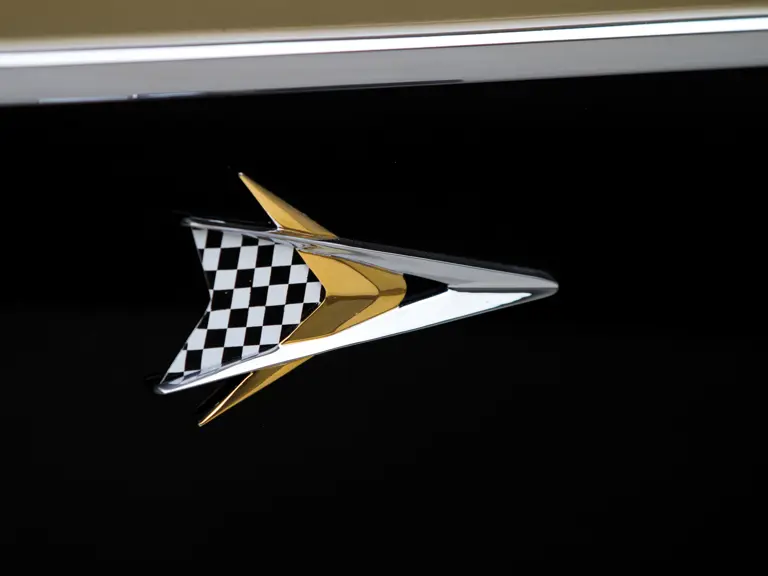

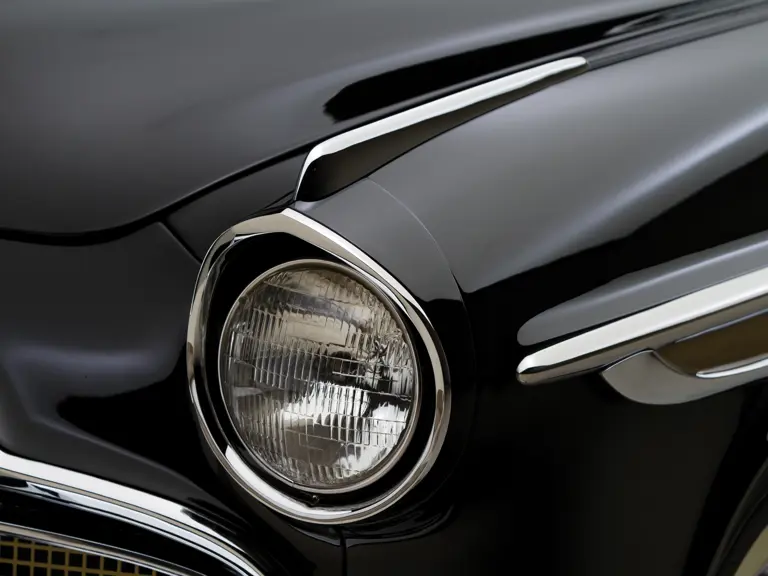


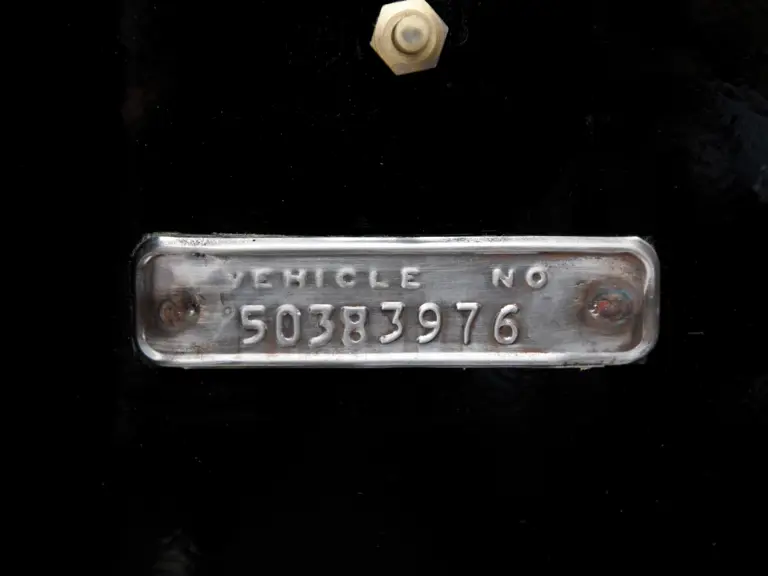
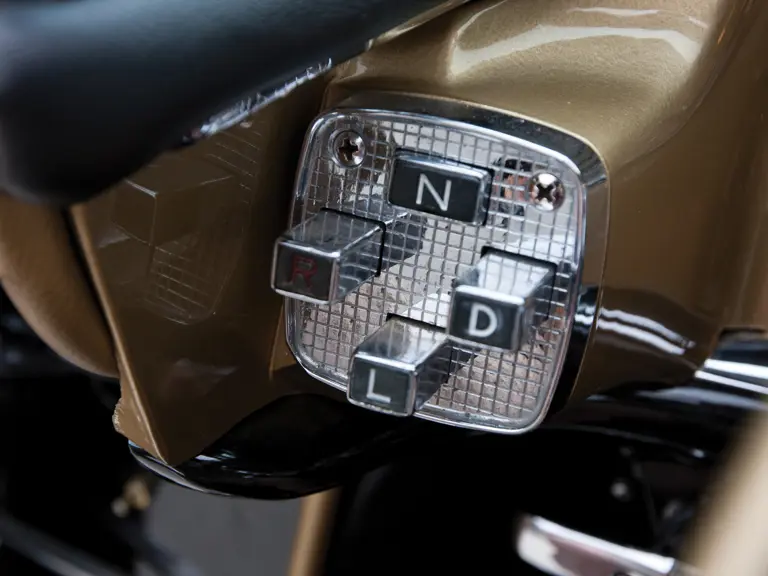
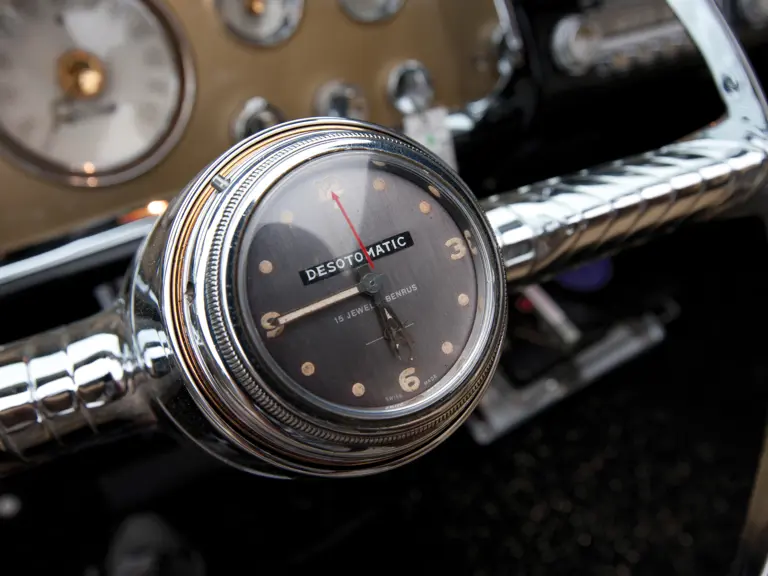
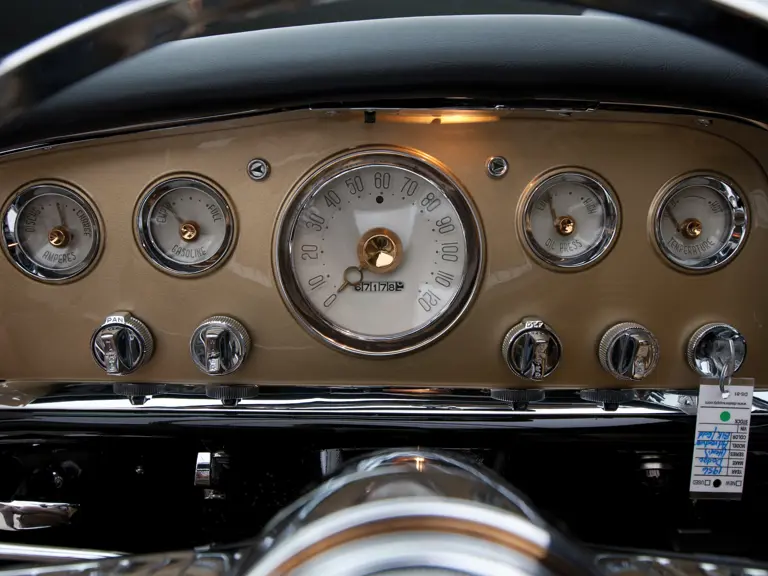
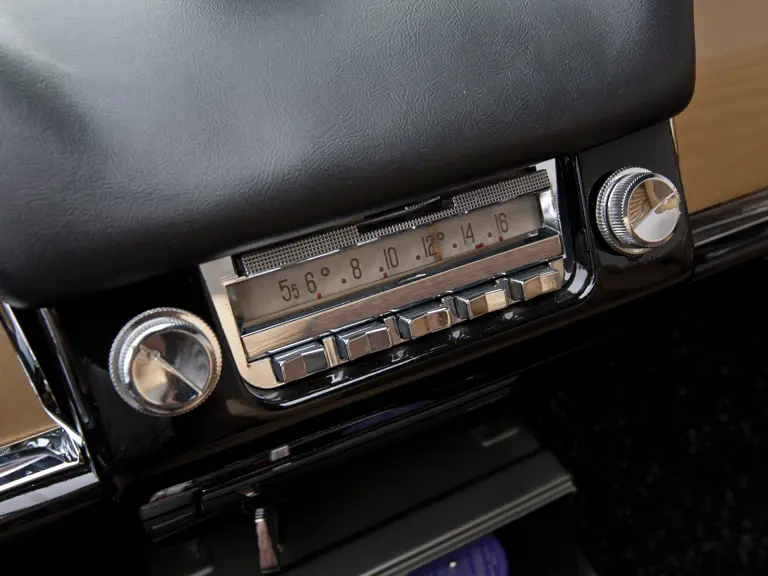
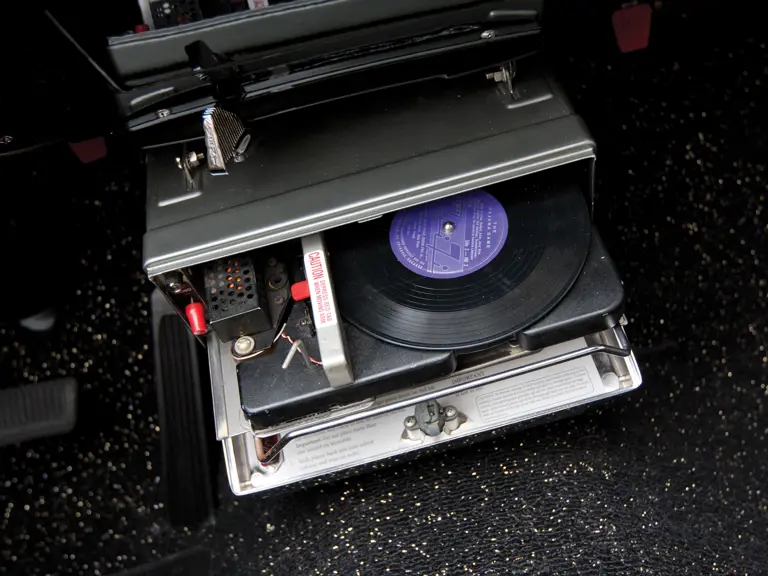
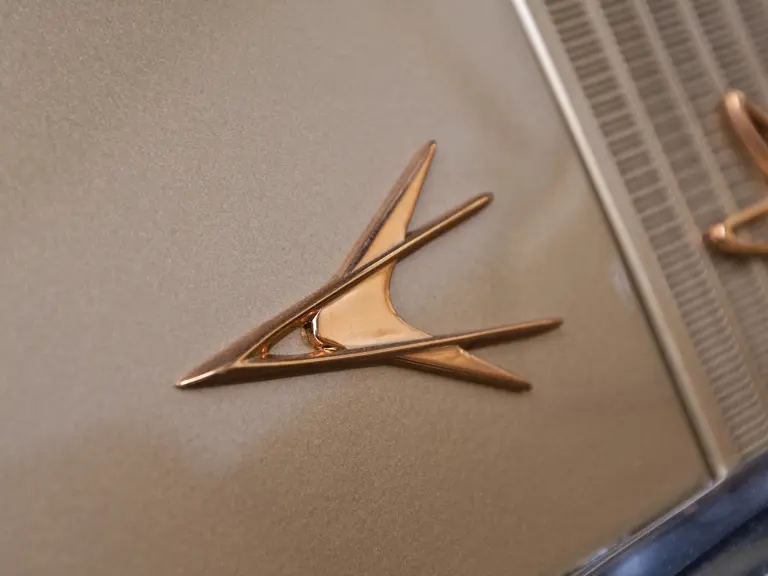
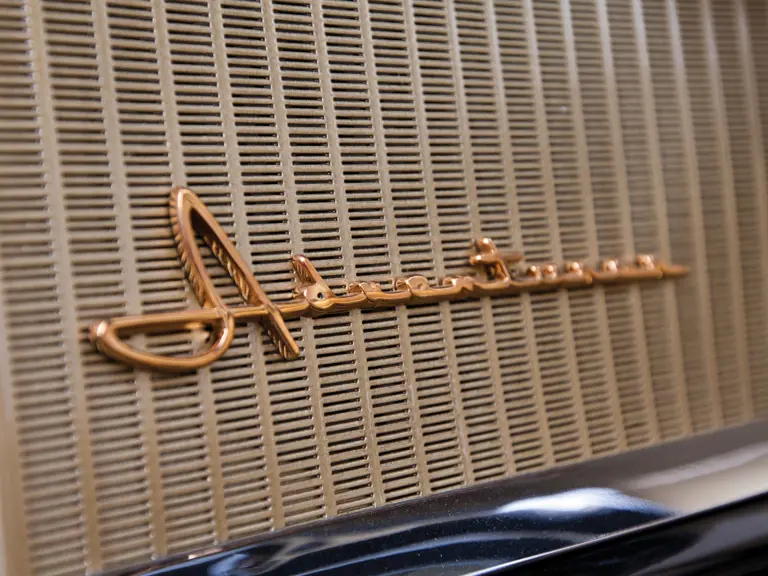
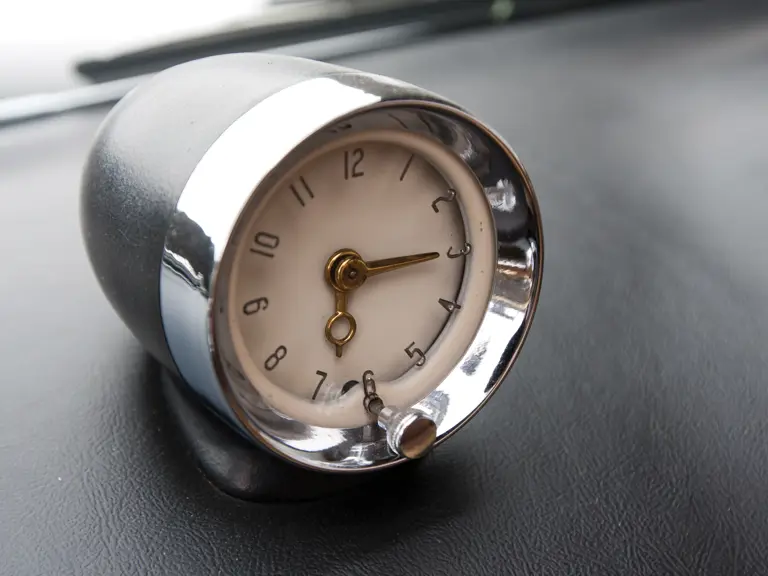
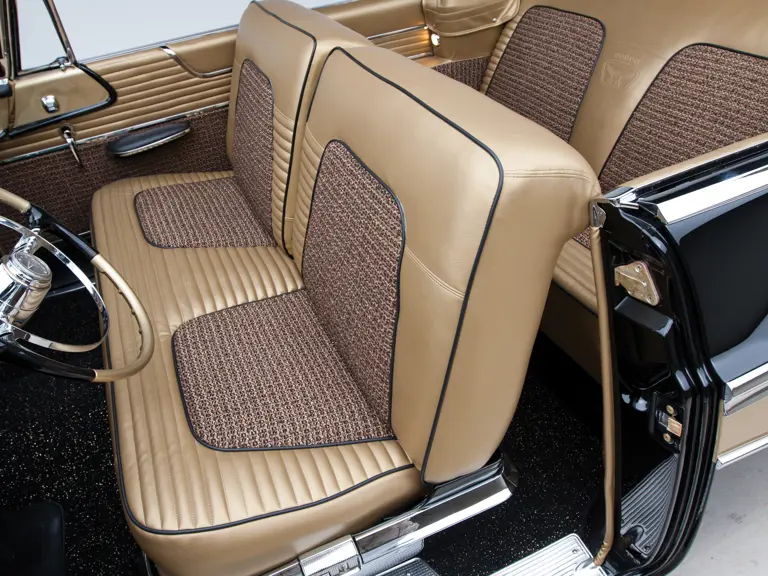
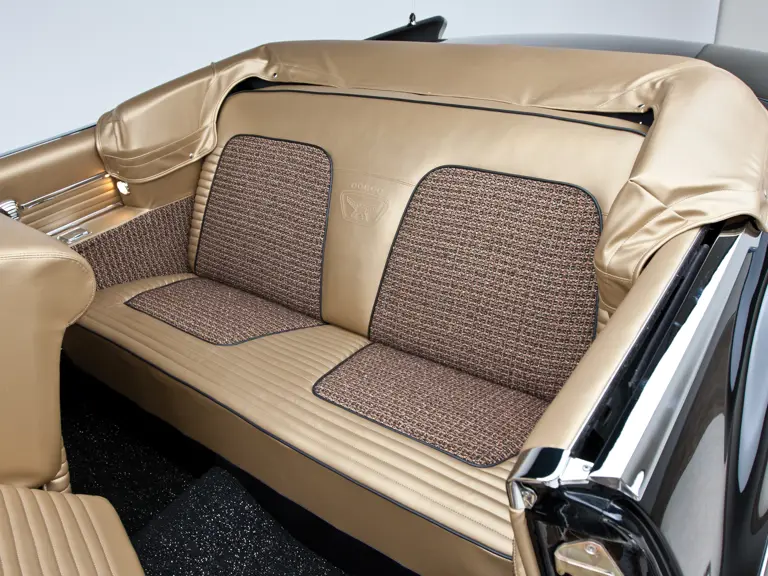
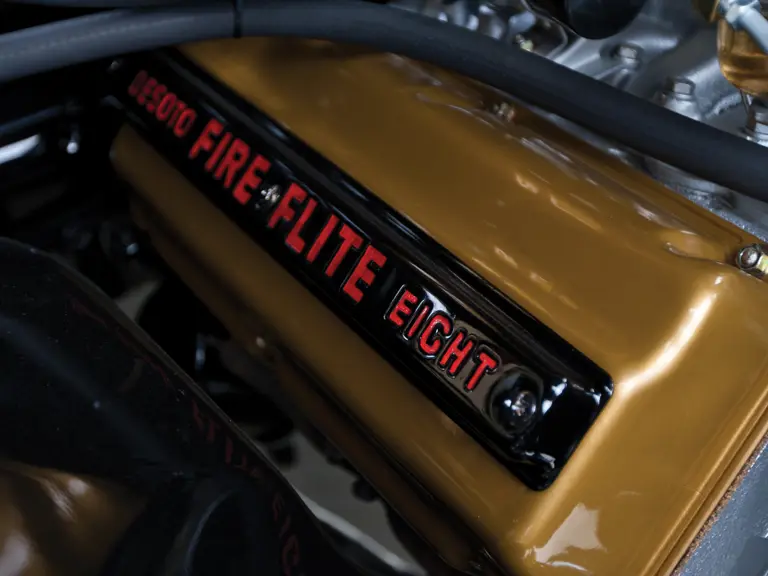
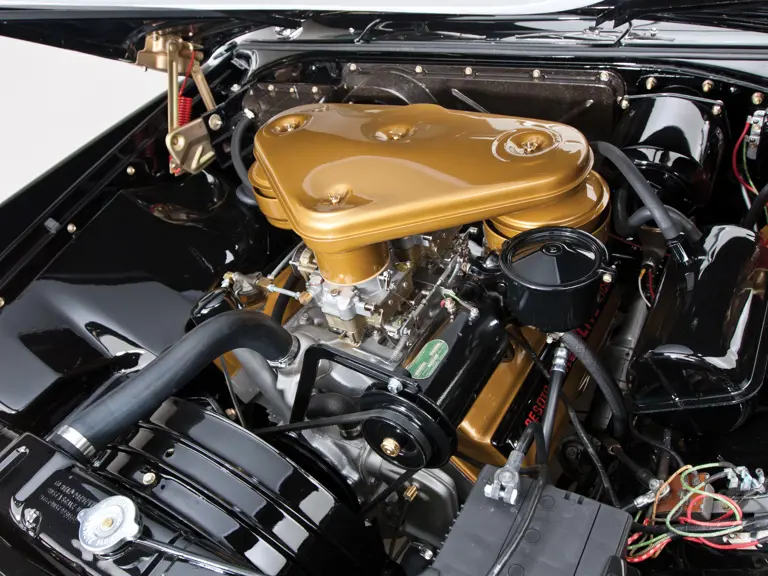

 | North Palm Beach, Florida
| North Palm Beach, Florida
